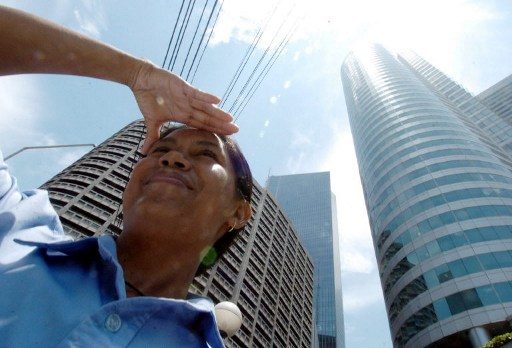SUMMARY
This is AI generated summarization, which may have errors. For context, always refer to the full article.

MANILA, Philippines – Climate change is taking its toll on countries’ labor productivity, as a recent study revealed that in Southeast Asia alone, “as much as 15% to 20% of annual work hours may already be lost in heat-exposed jobs.”
This figure may double by 2030 as global warming continues, according to one of the 6 papers assembled by the United Nations (UN) University and launched on Tuesday, July 19.
“One feature of climate change is the increasing heat exposure in many workplaces where efficient cooling systems cannot be applied,” said author Tord Kjellstrom of the Health and Environment International Trust in New Zealand.
“Current climate conditions in tropical and subtropical parts of the world are already so hot during the hot seasons that occupational health effects occur and work capacity for many working people is affected.”
The study, which cited estimated gross domestic product (GDP) losses for 43 countries, warned that the global economic cost of reduced productivity due to heat stress may be more than $2 trillion by 2030.
For low- or middle-income country-members of the Climate Vulnerable Forum (CVF) like the Philippines, productivity losses could be as high as $85 billion in 14 years’ time.
The CVF is composed of 20 countries most vulnerable to climate change.
The study said some of the lowest paid jobs – heavy labor, low-skill agricultural, and manufacturing – are the most susceptible to productivity losses due to heat stress
In the Philippines, available data suggests the cost of labor productivity loss due to excessive heat can reach 5.9% of the country’s GDP by 2030.
This situation, the study said, is “typical” of Southeast Asian countries: the decline in GDP by 2030 will be more than double the estimated 2.8% GDP lost to heat stress in 2010.
| Heat loss, $US millions, PPP | % of GDP | ||||
| No. of countries | 2010 | 2030 | 2010 | 2030 | |
| CVF members | 20 | Up to 10,000 (Philippines) |
Up to 85,000 (Philippines) |
1.1 to 5.5 | 2.0 to 6.5 |
| CVF observers (low/middle income) |
9 | Up to 55,000 (India) |
Up to 450,000 (China and India) |
0.2 to 3.3 | 0.8 to 6.4 |
| CVF observers (high income) |
15 | Up to 15,000 (USA) |
Up to 50,000 (USA) |
−0.1 to 0.1 | −0.2 to 0.2 |
| Other Southeast Asian countries (low/middle income) | 8 | Up to 10,000 (Malaysia) |
Up to 95,000 (Malaysia) |
1.8 to 3.0 | 3.5 to 5.9 |
| Other Southeast Asian countries (high income) | 2 | Up to 25 (Singapore) |
Up to 200 (Singapore) |
0 to 0.005 | 0 to 0.02 |
‘Decisive action’ needed
“It is very important to develop and apply adaptation measures now to protect people from the disasters that current climate and slowing changing climate brings,” Kjellstrom said.
More than adaptation, however, he said the world now must take “decisive action” to mitigate emissions of greenhouse gases.
“Failure will cause the frequency and intensity of disasters to worsen dramatically beyond 2050, and the situation at the end of this century will be especially alarming for the world’s poorest people,” he added.
While there is a need for cooling systems, especially in indoor workplaces, the study pointed out that many jobs cannot be cooled, requiring instead reduced work during the hottest part of the day.
“The changed work hour distributions can be seen as a part of ‘climate change adaptation,’ but the likely loss of economic output needs to be considered as an important ‘side-effect’ of this type of adaptation,” the study noted.
The study also suggested that employers provide sufficient and easy access to drinking water in all hot workplaces.
For their part, workers and supervisors should learn about the symptoms of severe heat strain and how to respond during emergencies to protect workers at early stages of heat stroke.
The 6 research papers launched on Tuesday highlight the rising cost – both in money and in health – of extreme weather events. These papers are published in a special issue of the Asia Pacific Journal of Public Health.
Kjellstrom’s paper “Impact of Climate Conditions on Occupational Health and Related Economic Losses: A New Feature of Global and Urban Health in the Context of Climate Change“ said the most effective way to protect health and economic progress is still through the global mitigation of climate change.
In April 2016, 175 countries signed the Paris climate deal which has been hailed as the first universal, legally-binding agreement on climate change.
The Paris deal sets the goal of limiting global warming to “well below” 2 degrees Celsius. Signatories through the deal, pledged to reduce the amount of carbon they emit, and to ensure their citizens are prepared for the effects of global warming. – Rappler.com
Add a comment
How does this make you feel?
There are no comments yet. Add your comment to start the conversation.